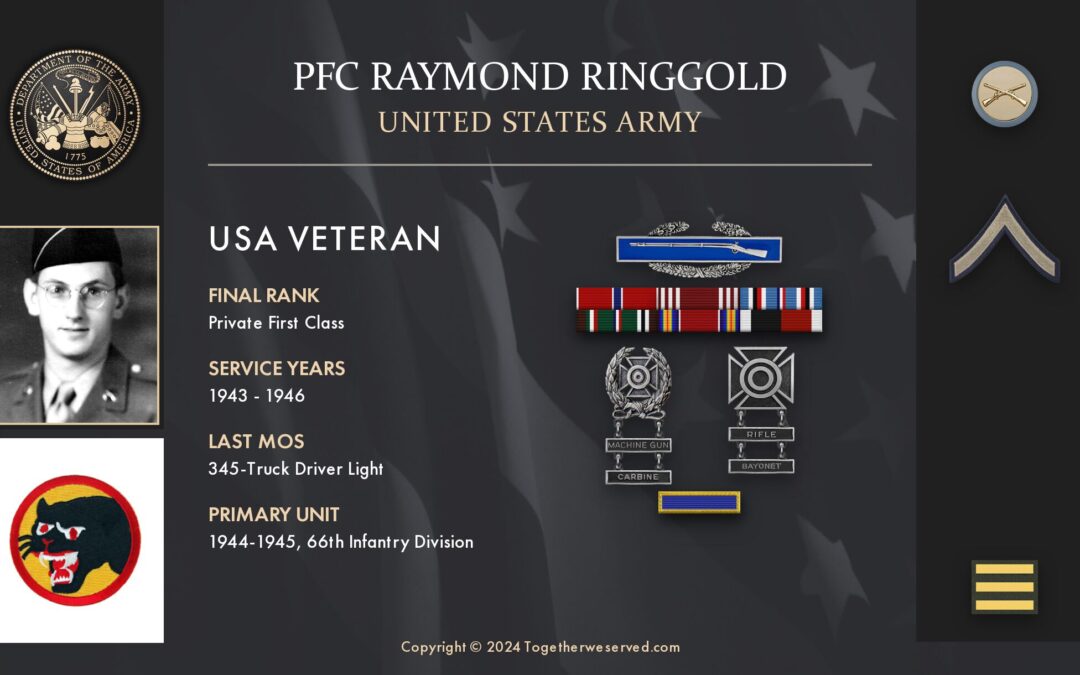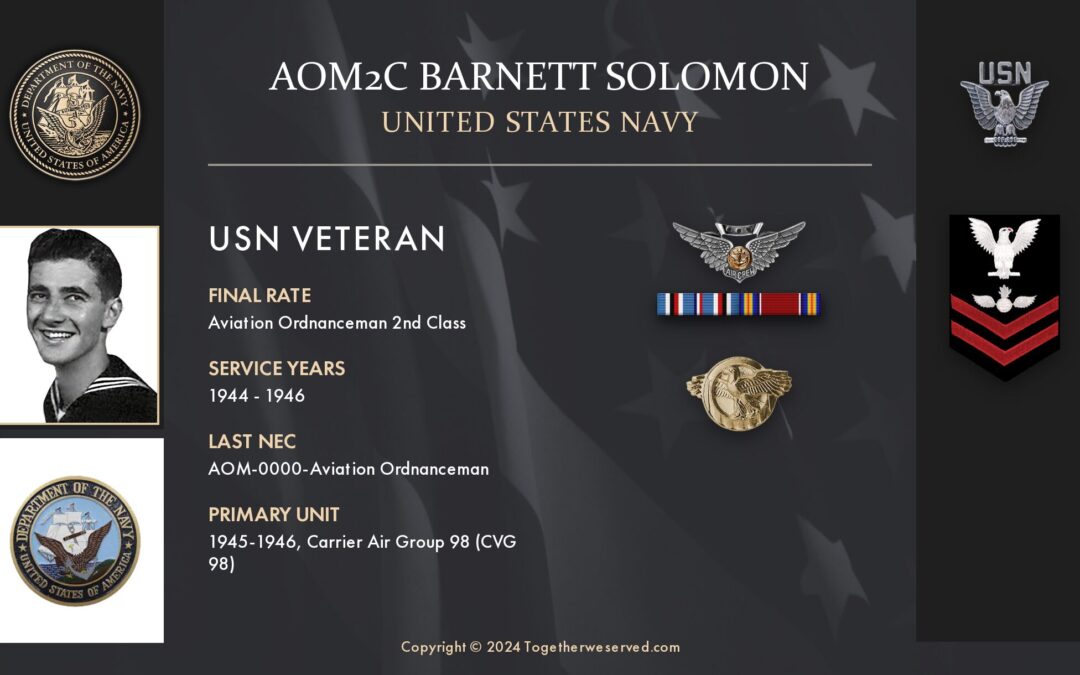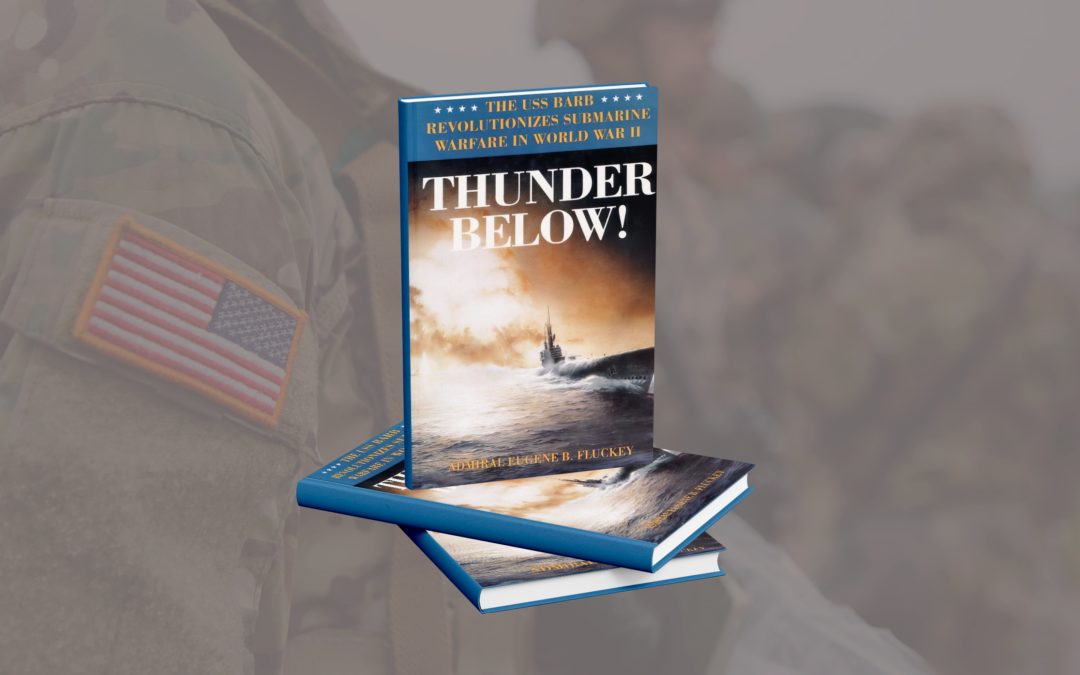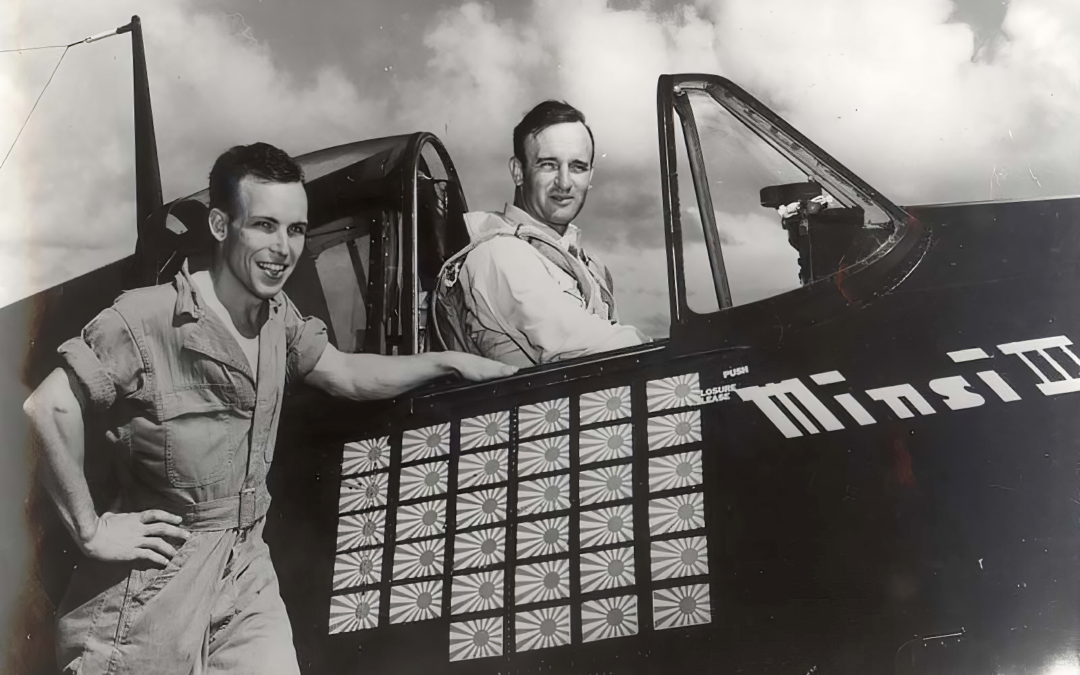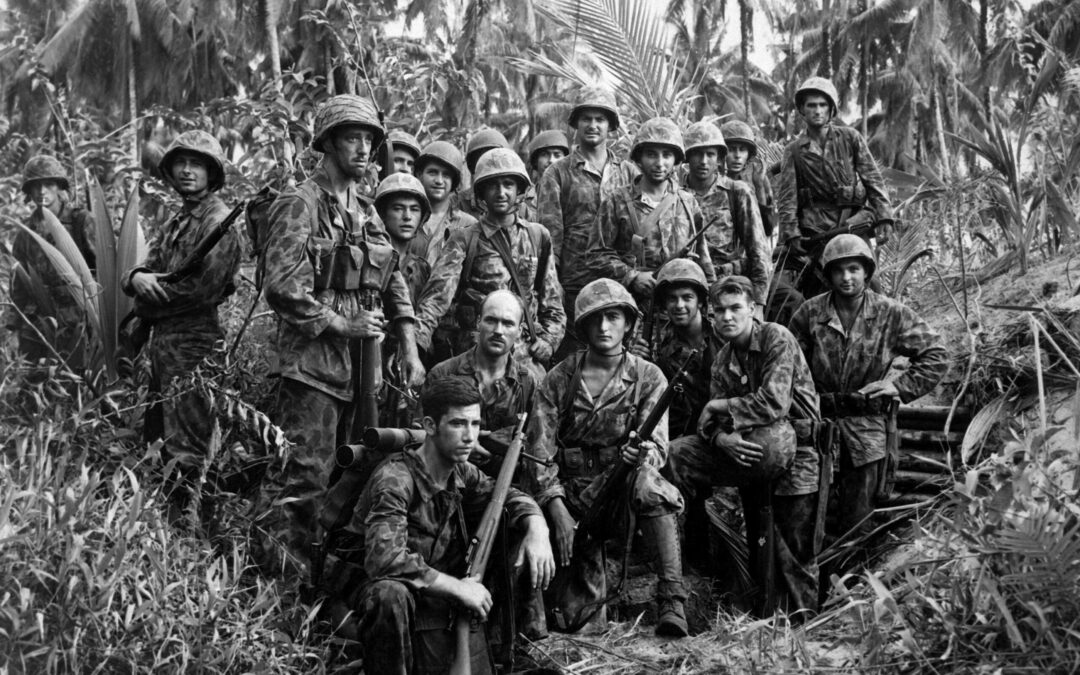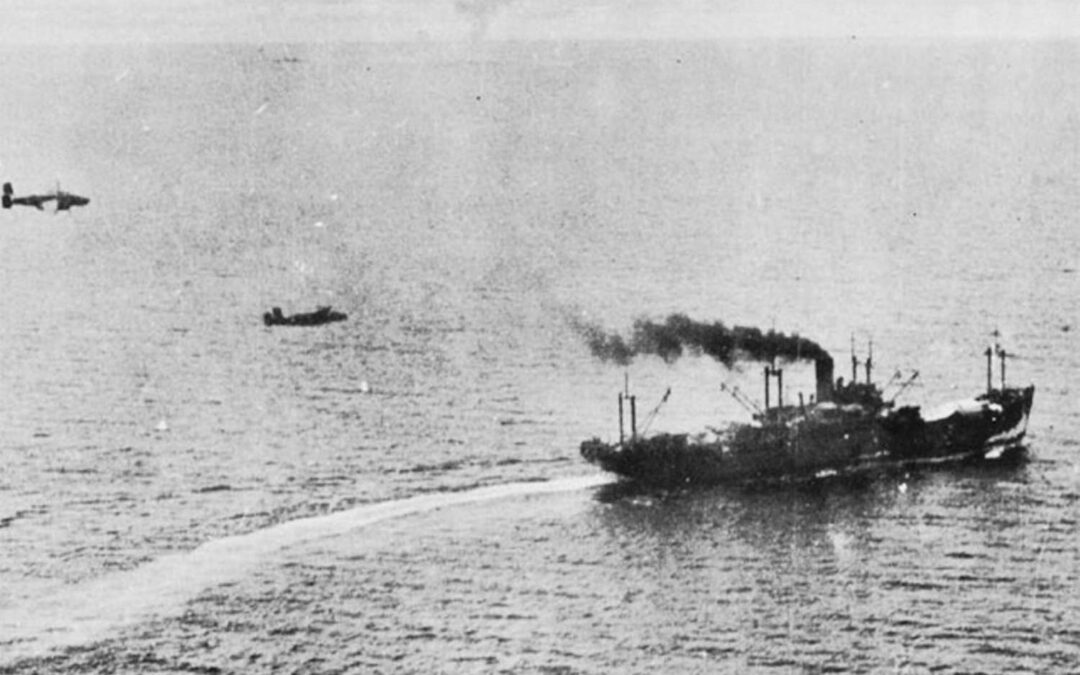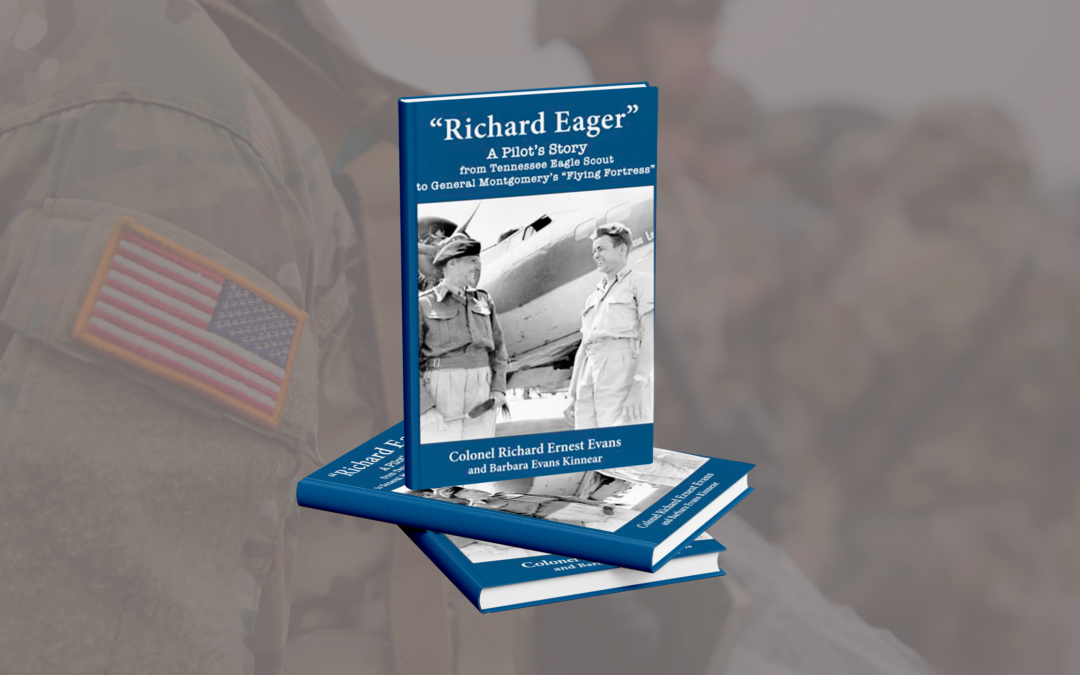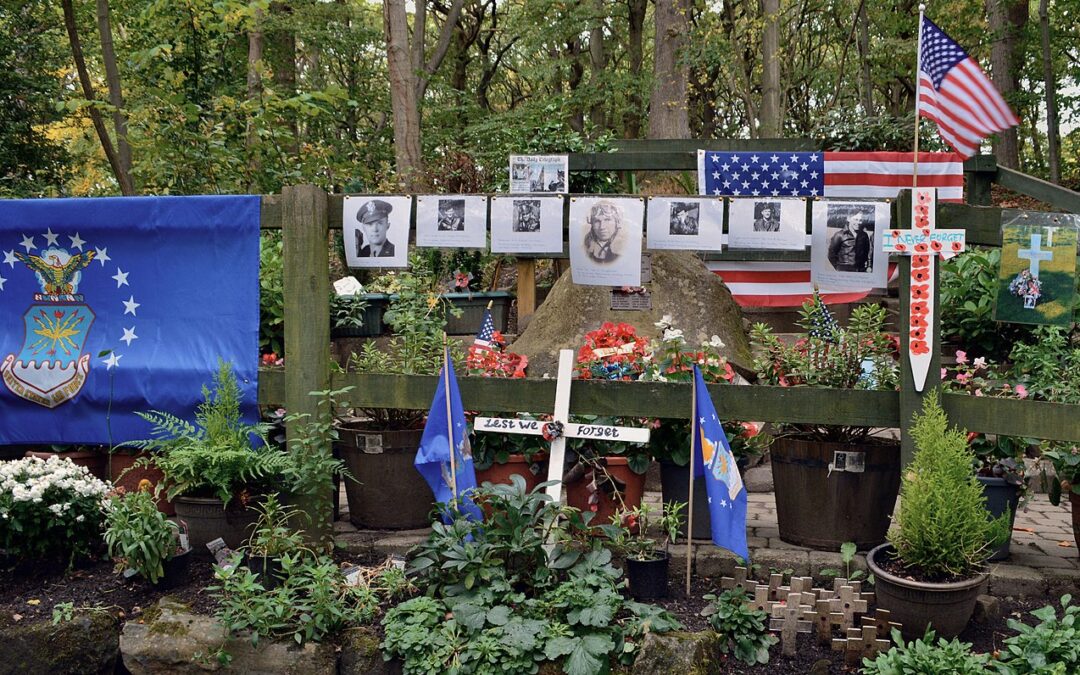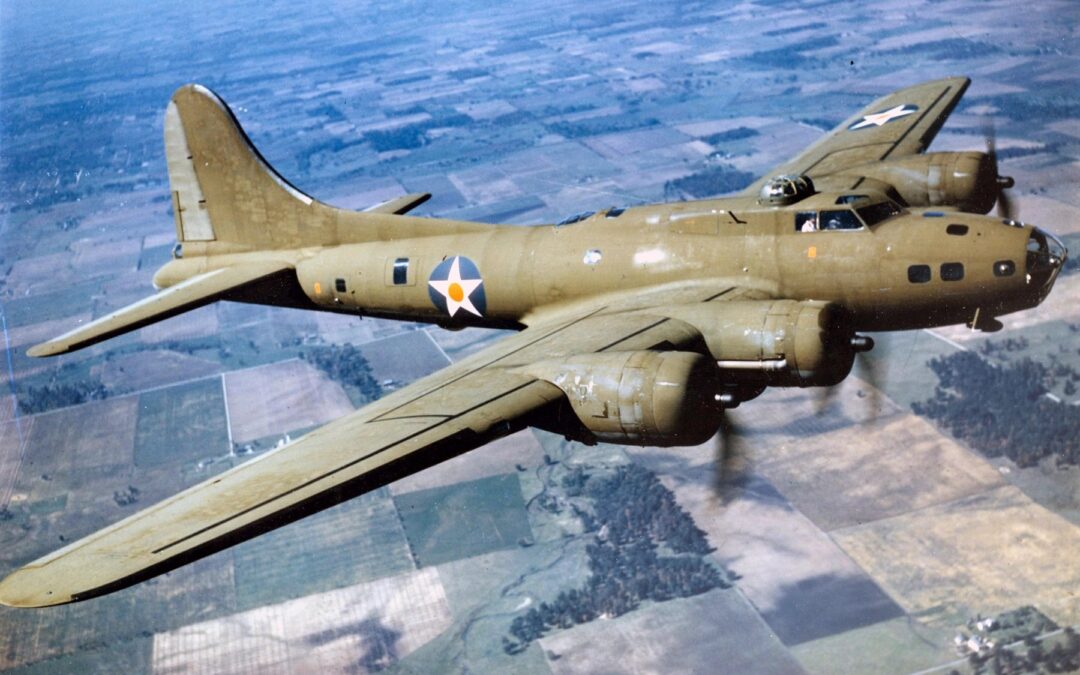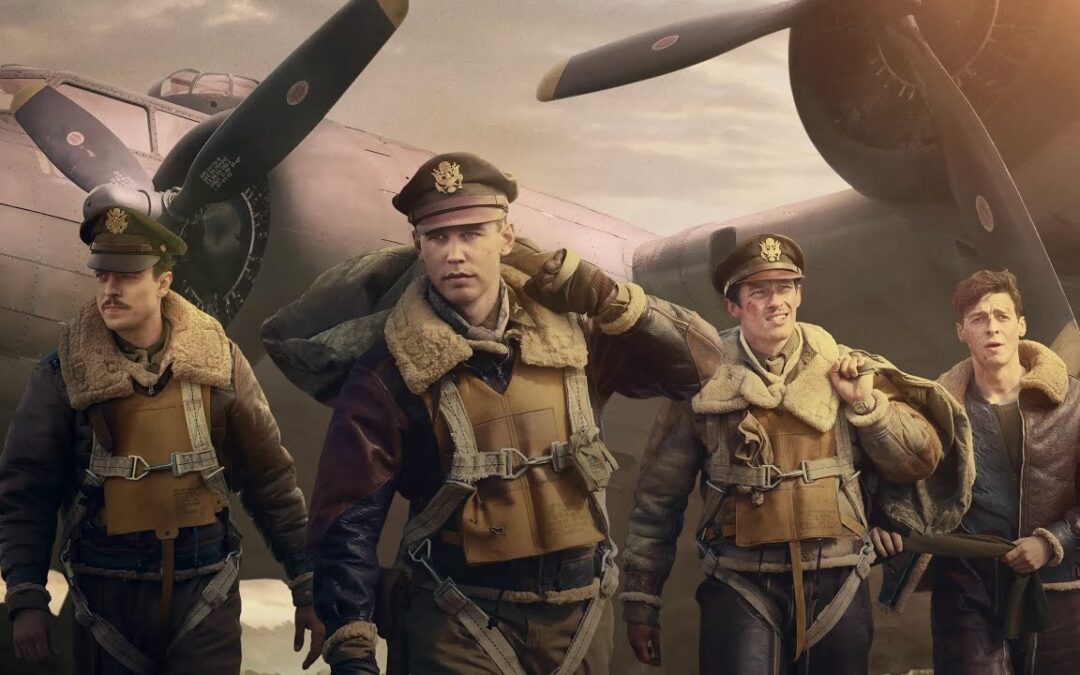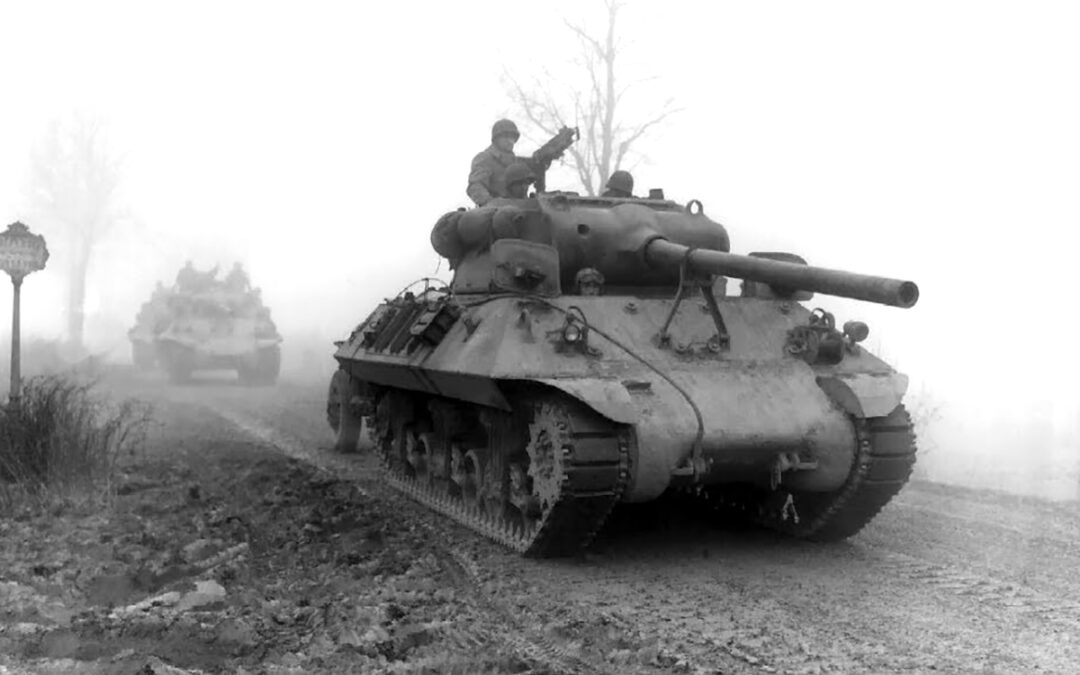PRESERVING A MILITARY LEGACY FOR FUTURE GENERATIONS The following Reflections represents PFC Raymond Ringgold's legacy of his military service from 1943 to 1946. If you are a Veteran, consider preserving a record of your own military service, including your memories and photographs, on Togetherweserved.com (TWS), the leading archive of living military history. The following Service Reflections is an easy-to-complete self-interview, located on your TWS Military Service Page, which enables you to remember key people and events from your military service and the impact they made on your life. Start recording your own Military Memories HERE. Please describe who or what influenced your decision to join the Army. By the time I graduated from high school in 1942, World War II was well underway. My father was an air raid warden, and when there was a blackout drill, we walked the neighborhood to make sure all curtains were drawn tight and there were no visible lights. The Government decided...
